Too Much Salt Isn’t Good For You OR Your Plants…
I have a weakness (well, one of many) to confess to you today….
I absolutely love salt.
In fact, I have a theory that the reason that so many people love french fries is not the potatoes or the fat it is fried in. No, it is the salt that you put on them afterwards. I mean, can you imagine eating an unsalted french fry?
In preparation for this blog post, I went through my kitchen and pulled out all of my salt & pepper shakers.

It’s kind of embarrassing isn’t it? I have so many.
But in my defense, I must admit that I collect different types of pottery and need salt and pepper shakers for each set.
My husband made me my wooden salt cellar, which I keep near the stove when I cook.
Now, I do not use as much salt as I used to. In fact, I am trying to be better about it. When I visited the doctor earlier this week for my physical, I still had low blood pressure, much to my relief.
Well, we all know that too much salt is bad for you and can lead to health problems such as high blood pressure. But did you know that too much salt is not good for your plants as well?
Plants don’t get ‘high blood pressure’ with too much salt, but they do have another problem that shows up.
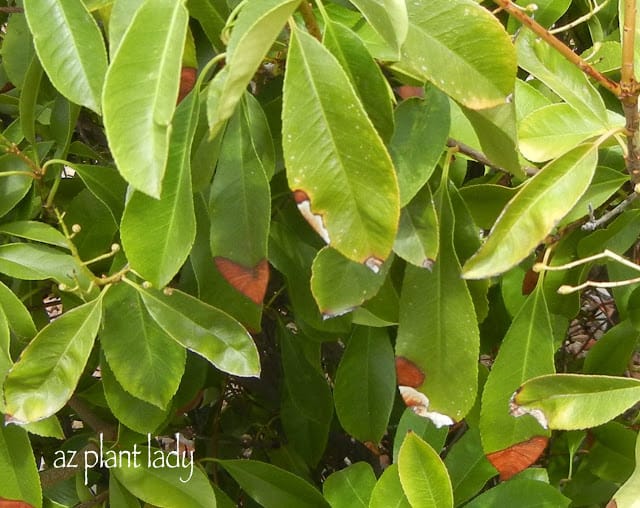
They get brown tips on their leaves, which we call ‘salt burn’.
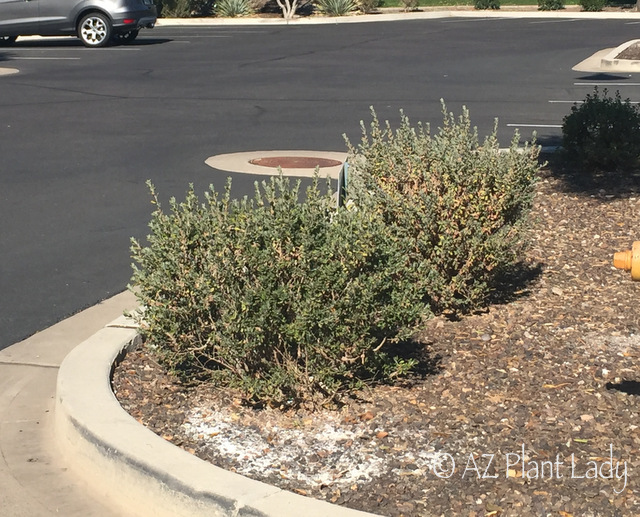
Here is another way that you can tell plants are getting too much salt. Shallow watering causes the water in the soil to evaporate quickly, leaving behind the salts. The salts look like a white crust on the soil around your plants.
At this point you may be wondering how plants get too much salt?
Well, both our soil and water have naturally occurring salts in them. This is especially true in the Desert Southwest where our water is somewhat salty and our soils can suffer from salt build-up due to high evaporation.
So what do you do if you have indoor or outdoor plants that have brown tips?
The solution is very easy.
Water deeply.
That’s it!
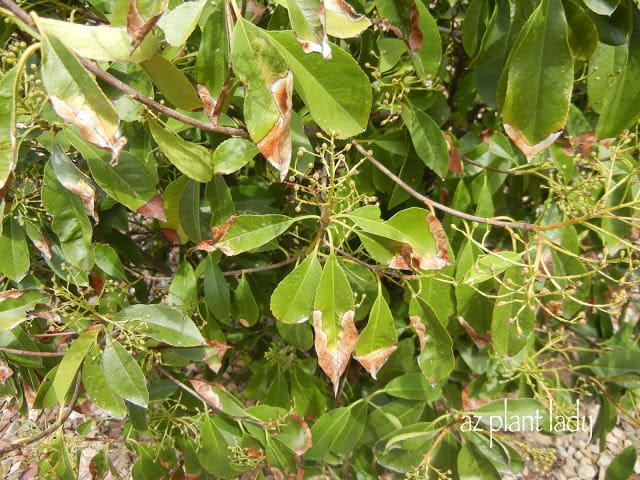
Here is a shrub with signs of salt build-up that I encountered with one of my clients during a landscape consultation. He had other shrubs that looked similar.
I will tell you what I told him:
If your outdoor plants look like this, water the affected plant with your hose on a slow trickle for at least 2 – 3 hours. This helps to ‘leach’ or flush the salts away from the roots.
Thereafter, adjust your irrigation schedule so that your shrubs are watered to an approximate depth of 18 inches each time. Sadly, most people water too often, too shallowly, and not long enough.
For example, I water my shrubs and perennials every 3-4 days in the summer. It takes approximately 1.5 to 2 hours for my plants to be watered to a depth of 2 feet. Of course, the time it takes to water that deeply is different for each landscape and depends on various factors, including soil type and water pressure.
If your houseplant has brown tips (salt burn), you can flush the salts out by deeply watering it. Put your plant in the sink or bathtub and let water slowly trickle on it for 1 – 2 hours.
I cover landscape irrigation in depth with my students in my online course, Desert Gardening 101. However, for those looking for advice right now, here’s what I recommend: Search your city’s website (or water provider) for watering guidelines —most have schedules, including recommended depths.
So, in closing, I’ll leave you with these two tips:
Be sure to limit your salt intake AND water your plants deeply to prevent salt burn.

 Noelle Johnson, aka, 'AZ Plant Lady' is a author, horticulturist, and landscape consultant who helps people learn how to create, grow, and maintain beautiful desert gardens that thrive in a hot, dry climate. She does this through her consulting services, her online class Desert Gardening 101, and her monthly membership club, Through the Garden Gate. As she likes to tell desert-dwellers, "Gardening in the desert isn't hard, but it is different."
Noelle Johnson, aka, 'AZ Plant Lady' is a author, horticulturist, and landscape consultant who helps people learn how to create, grow, and maintain beautiful desert gardens that thrive in a hot, dry climate. She does this through her consulting services, her online class Desert Gardening 101, and her monthly membership club, Through the Garden Gate. As she likes to tell desert-dwellers, "Gardening in the desert isn't hard, but it is different."
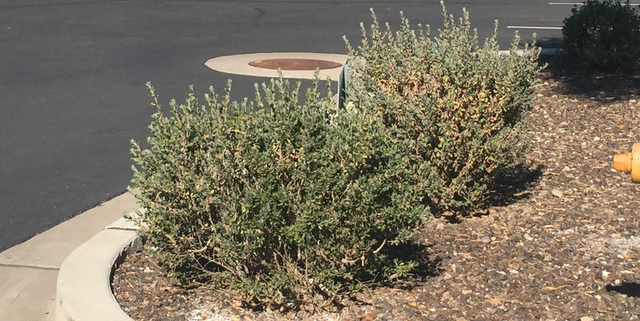
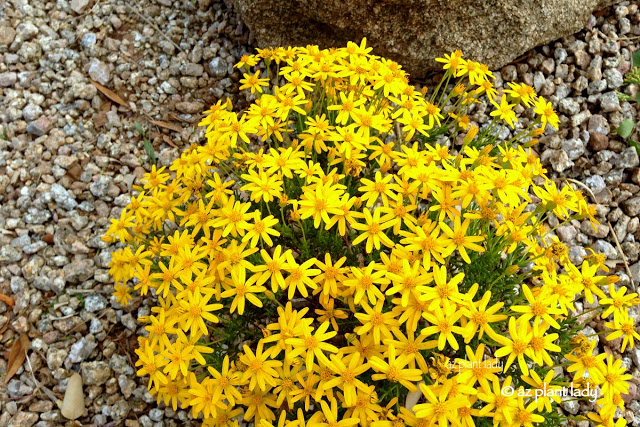

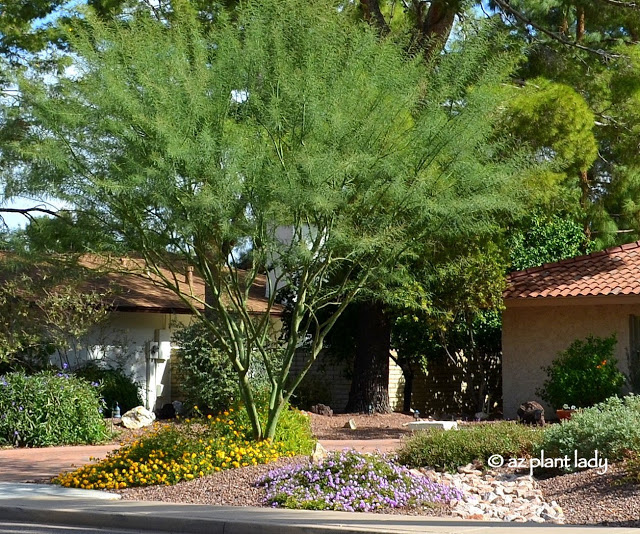
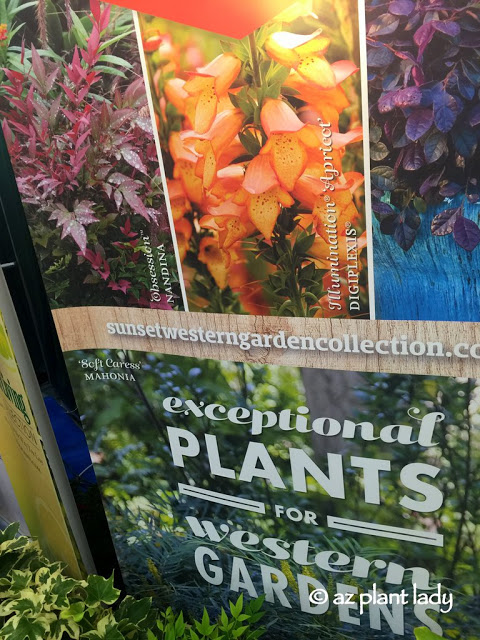
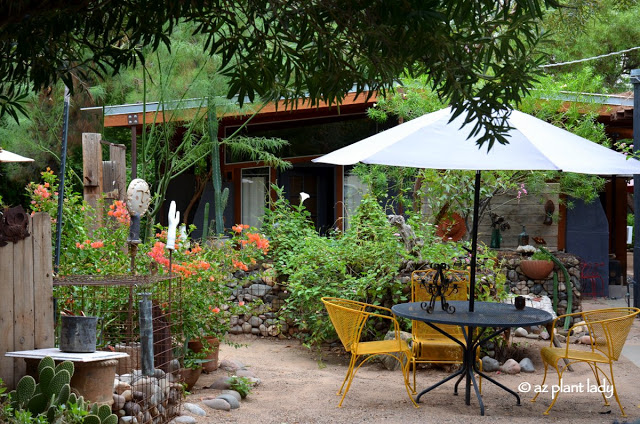
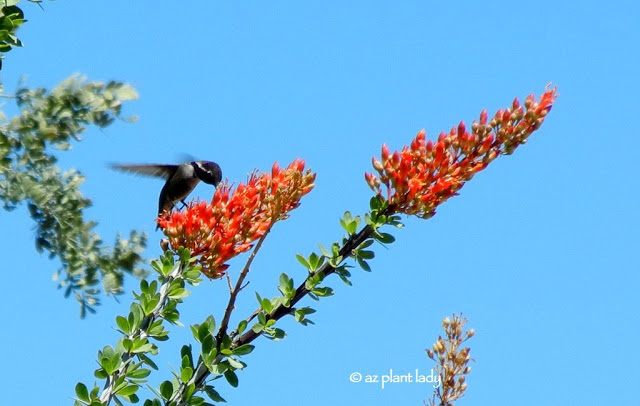







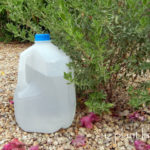
Thanks for the post. I see this on my bushes every once in awhile. Is there a sure fire way to tell how deep you are watering, without digging a hole?
Hello Katie,
An easy way to tell how deeply you are watering is to take a piece of rebar or a long screwdriver and push it into the soil after you have watered. It should sink easily downward until it reaches dry soil. Pull it back it up and measure how deep it went down and then adjust your irrigation time up or down.
I hope this helps 🙂
Noelle
It did! Thank you very much! 😀
I love salt too! I put it on everything, especially fruits like green mangoes, pineapples, tart strawberries. I'm addicted to salt. Try the special gray and pink sea salts, they are actually really good for you, and get rid of the guilt of loving salt forever! btw, i'm very healthy although I'm a salt (and butter) addict.
June